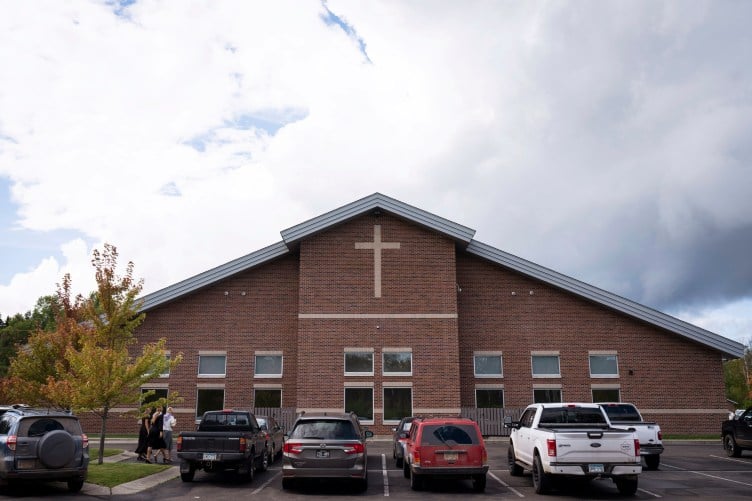On a hot Sunday afternoon in June 1989, two of the most powerful men in Illinois met to watch a ballgame at Wrigley Field — and, if all went well, to make a deal.
James R. Thompson, the state’s four-term Republican governor, and Edward Brennan, chairman of Sears, Roebuck & Co., the world’s largest retailer, had been deep in talks for months.
The stakes were high. Brennan was threatening to move Sears’ corporate headquarters, located in downtown Chicago in what was then the tallest skyscraper in the world, to another state. The move would rob Illinois of thousands of good-paying jobs, tens of millions in tax revenues and its reputation as a business-friendly state.
As the two men watched the Montreal Expos blank the Cubs 5-0, dropping the “Lovable Losers” out of first place, Thompson told Brennan he’d do whatever it took to keep Sears from leaving. The state had crafted a package of financial incentives that the legendary political deal maker believed was too good to pass up.
After the game ended, Thompson called up one of his closest associates, Jay Hedges, director of the state’s Department of Commerce and Community Affairs. In a recent interview, Hedges recalled Thompson delivering the news of his breakthrough.
“Well, Jay, Sears is staying in Illinois,” Thompson told him. “And they want to move to Hoffman Estates.”
The deal cemented that day would permanently change Illinois, as politicians embraced the use of taxpayer funds to stop a growing exodus of jobs from the state. Since 1989, state and local officials have given $5.3 billion in government incentives to corporations, according to Good Jobs First, a non profit which compiles data on tax deals.
In Sears’ case, state and local officials awarded the company subsidies and tax deals worth more than $536 million over the past three decades — the largest package of governmental incentives ever given to a single company in Illinois.
The tax breaks and credits would transform Hoffman Estates, then a suburb of 45,000 that lay among cornfields 30 miles northwest of Chicago. Sears worked with state and local politicians to build a sprawling corporate headquarters, new roads, tollway interchanges and other infrastructure in the growing village.
Today, Sears, which emerged from bankruptcy last year, is struggling to stay in business, battered by relentless competition and its own miscues and missteps. Billionaire hedge fund manager and former Sears chief executive Eddie Lampert purchased the assets of the company to revive it and avoid liquidation. Creditors continue to scrap over the corporate remains in a bankruptcy courtroom in New York City. Sears closed retail stores across the country in response to the COVID-19 outbreak, further jeopardizing the company’s financial condition.
The corporate campus built in Hoffman Estates is largely vacant, a hollowed-out shell with a skeletal workforce surrounded by acres of unused parking.
Hoffman Estates Mayor William McLeod was a village trustee who voted for the original deal that brought Sears to Hoffman Estates in 1989. As the mayor in 2011, he lobbied for the state to extend tax benefits as Sears once again threatened to leave the state.
Today, he says the benefits of the Sears deal to the village and the state are obvious. Simply look around, he says. “We built another city out here.”

ProPublica and the Daily Herald wanted to know whether the investment paid off. Where has the deal succeeded? Where has it failed? What did Illinois and Hoffman Estates taxpayers get for the half billion dollars awarded to Sears?
The review of the Sears deal shows that 30 years of spending public money on private interests failed to deliver the economic bonanza envisioned by corporate, state and local officials.
When the deal was getting off the ground in 1989, an economic impact study forecast that a special tax district created for Sears would generate the equivalent of $626 million in total property tax revenues by 2012. Total revenues wound up actually being closer to $338 million, when adjusted to 1989 dollars — 54% of what was projected.
The shortage prompted state and local officials to invest additional money into more development projects. For instance, Hoffman Estates worked with Sears and private developers to issue $55 million in bonds to construct Sears Centre, an 11,000-seat entertainment arena. One reason was to make up for the poor performance of the tax district by bringing in more revenue, according to a summary of a deposition from one of the arena’s developers in court files. Instead, the arena was a financial drain, its costs increasingly borne by Hoffman Estates taxpayers.
In 2012, Illinois and Hoffman Estates officials negotiated a new deal which extended the life of the taxing district by 15 years. The deal was marked by loopholes that allowed Sears to continue collecting tax revenues even as job losses mounted, according to the Daily Herald and ProPublica review.
As part of the agreement, legislators required Sears to keep a certain number of jobs in Hoffman Estates to receive tax benefits. But as the company laid off thousands of workers in the years after the deal was inked, it began to count not only Sears jobs but any employment associated with the company’s headquarters — such as workers at the fast food restaurants in the building’s front atrium. Legislators said they never intended to allow Sears to include other firms’ employees in its tallies, but state officials did little to monitor the company’s compliance.
The news organizations also commissioned an analysis to examine whether the incentives had any lasting economic effect — the underlying justification for giving Sears the tax breaks in the first place. The study, conducted for the news organizations by the Center for Tax and Budget Accountability, or CTBA, a bipartisan research and advocacy organization focused on social and economic justice, found no evidence that Hoffman Estates wound up better off in terms of property values and employment than similar towns around Chicago that spent little or no money on tax deals for corporations.
Hoffman Estates would likely have experienced significant growth without Sears, the study suggested. Suburbs similar to Hoffman Estates saw gains in jobs and property values without giving hundreds of millions in incentives to a single company.
CTBA used a statistical method known as a “difference-in-differences,” which measured the economic impact of the Sears deal by comparing before-and-after economic trends in Hoffman Estates to similar, nearby communities over the same time period between 1980 to 2017.
CTBA relied on nine economic variables, ranging from annual employment figures and median income to the taxable property values in each municipality.
The Sears deal “absolutely wasn’t worth the money,” said Ralph Martire, the CTBA’s executive director. “None of the anticipated benefits came anywhere near materializing.”
State and local officials maintain none of the development that happened in or around Hoffman Estates would have occurred if not for the incentives granted to Sears.
Sears money helped to pay for new roads, highway exits, police and fire protection — all without the financial strain created by residential growth, they say.
The Sears Centre, McLeod said, was “working out successfully,” attracting nearby retail stores and restaurants.
McLeod acknowledged that the deal may not have lived up to expectations. But he said that it generated, essentially, free money that put no extra burden on schools, libraries or parks. It attracted new businesses and brought tens of millions of additional tax dollars to the village.
“I can’t figure out the downside,” McLeod said.
Officials with the state Department of Commerce and Economic Opportunity, which awarded $230 million in tax credits and other incentives to Sears over 30 years, declined to comment. They noted that the tax arrangements had been made long before current Gov. J.B. Pritzker took office.
Thompson declined to comment. Brennan died in 2007.
A spokesman for Transformco, the current owner of Sears, declined to comment. Transformco is the company that Lampert and his hedge fund, ESL Investments, created to buy Sears out of bankruptcy in February 2019.
“We’re a private company and don’t comment on these sorts of details,” a spokesman said.
Tax Breaks Don’t Deliver
Thompson and fellow politicians’ willingness to provide substantial tax incentives and property improvements to keep Sears in Illinois set off a rush among big corporations to seek similar payouts from municipalities and states across the country. It wasn’t the first such deal in the United States. But it was one of the biggest at the time.
Companies quickly learned to pit city against city to spark frenzied bidding wars. Every year across the United States, state and local governments now hand out an estimated $45 billion in tax breaks and other subsidies to attract business, according to Timothy Bartik, a leading scholar of tax incentives at the Upjohn Institute for Employment Research in Kalamazoo, Michigan.
In a highly publicized battle two years ago, Amazon, one of the world’s richest companies, extracted promises of more than $2 billion in incentives from New York and Virginia to build a new corporate headquarters in a contest among hundreds of communities. The New York deal collapsed after fierce opposition from local critics.
Read More
The ProPublica review provides additional evidence to a growing consensus among economists: Tax breaks generally don’t provide the expected benefits to local economies.
Contrary to the assumption that tax incentives are needed to keep corporations from relocating, government aid frequently does little more than reward businesses for moving where they already planned to move or for creating jobs they already planned to create, said Nathan Jensen, a professor at the University of Texas at Austin who studies economic development. Incentives spending, he noted, is inherently a zero-sum game: Every dollar awarded to Sears is one less dollar for public schools, roads and parks, or police and fire protection.
“That’s one of the underreported things,” Jensen said. “We can think about these deals as costs on society.”
Those costs have real-world effects.
Nancy Zettler lives in Algonquin-based Community Unit School District 300, which overlaps a portion of the Sears tax district, though there are no District 300 students living within the tax district’s boundaries.
District 300 is the state’s sixth largest and serves 21,000 students, at 26 schools, covering 118 square miles, from wealthy Barrington Hills to working-class Carpentersville. Four out of every 10 students are low-income or qualify for free or reduced lunches.
When her kids started going to school in the district, she couldn’t understand why it was struggling financially.
Zettler’s oldest daughter’s first-grade classroom at Westfield Community School had 35 kids in it. In some cases, children attended classes in portable trailers, and special education classes met in storage closets because of overcrowding. Some buildings were also in serious disrepair. “It was horrible,” she said.
When she learned that millions of dollars each year were flowing to Sears through the special tax district — known as an economic development area, or EDA — instead of going to the schools, she was angered. “I started researching it, and I was like, ‘Whaaaat?’”

District 300, like every other Illinois school district, is dependent on local property taxes for revenue. But the school system’s advocates, who long have challenged the extension of the Sears incentives, argue that with the majority of money from the special district going to Sears, the district received far less taxes over time.
Over the two-decade duration of the first Sears tax break, District 300 collected $26.5 million. The terms of the deal, they say, meant that the district may have missed out on as much as $270 million in property taxes that instead financed the Sears development.
Today, District 300 is suing Sears and Hoffman Estates to try to claw back some of the funds. District attorneys argue that Sears failed to maintain enough jobs under the terms of the 2012 agreement. They say that Hoffman Estates failed to police the company. The lawsuit seeks the return of $43 million in taxes.
Attorneys for Sears said they met all the conditions of the deal.
McLeod said it was the state’s job to hold Sears accountable. He noted that District 300 had received tens of millions of dollars from the Sears deal, even though Hoffman Estates children don’t attend its schools.
“I have no mechanism to measure how many people are in those buildings,” McLeod said. “We just follow the law that the legislature passed.”
But Zettler, who now serves on the District 300 school board, said the tax money should have gone to education.
“These deals that the state and local governments make with these businesses are flat-out bad,” Zettler said.
A Flourishing Suburb
In the years after Phoenix homebuilders Sam Hoffman and his son, Jack, bought a 160-acre farm 30 miles northwest of Chicago in 1954 and split up the land into a neat subdivision of half-acre lots, the village that would come to bear the family’s surname grew at a steady clip.
Sprawl came remarkably fast to Hoffman Estates, as returning veterans and city ex-pats scooped up the modestly priced homes in the tract developments that were taking over the suburban landscape. In 1960, a year after the village was incorporated, more than 8,000 people called Hoffman Estates home.
Village leaders were quick to catch onto Chicago-style, pay-to-play politics. In 1973, two former mayors, Roy L. Jenkins and Edward F. Pinger, along with four trustees on the village board went to prison for accepting bribes in exchange for favorable zoning.
Emerging from those scandals in the mid-1970s, Hoffman Estates was a town with an identity crisis. Spanning five townships and crossing two counties, the village had no traditional “Main Street” downtown, and its students were spread across six school districts. It was less of a cohesive village than an amalgamation of subdivisions dotted with shopping plazas.
While the village had become a flourishing, if sleepy, bedroom community, its fast growth came with a price: More people meant higher costs for more municipal services like schools, parks and police.
The village lacked much of a commercial tax base to help pay the bills. Officials wanted to attract more business not only to keep residential tax rates down but to bring more jobs for locals.
They looked with envy at Schaumburg, their rapidly expanding neighbor to the east, as it cemented itself as the economic powerhouse of the northwest suburbs. It had the Woodfield Shopping Center, the area’s destination shopping mall, along with retail stores and restaurants. It filled up with office buildings, including the headquarters of Motorola, which arrived in 1976.
Schaumburg was so flush with commercial tax cash that its residents didn’t even pay local property taxes until 2009.
800 Acres and a Deal
Hoffman Estates had one thing Schaumburg didn’t: thousands of undeveloped acres of land. One site contained nearly 800 acres of rolling farmland between Beverly Road and Route 59, just off the Northwest Tollway.
It was just what Sears wanted.

Brennan was looking in 1989 to leave Sears Tower, which dominated Chicago’s skyline as a none-too-subtle reminder of the company’s reach and riches. He was looking for a less expensive headquarters in a sprawling suburban campus. The land had to be cheap and shovel-ready. The location needed to be next to an interstate, with an easily accessible interchange, and close to an airport.
Thompson’s administration identified Hoffman Estates as a probable site.
The details of the deal, worth $261 million in 1989, are complex.
In exchange for agreeing to move its headquarters to Hoffman Estates, the company received a state promise to spend more than $61 million — a sum that later grew to $80 million — for infrastructure improvements. The state built two new tollway interchanges to connect the Sears headquarters to the Interstate 90 and handle the thousands of vehicles that would be going in and out of the complex each day.
The company was also given the 800 acres along the tollway paid for by $181 million in bonds issued by Hoffman Estates and funded by increased property tax revenues in the district.
The company used 200 acres for its new campus-like headquarters — more than 2 million square feet of office space in low-slung buildings with blue-mirrored glass, designed to hold 5,000 to 6,000 employees.
More than half the size of the Pentagon, the complex was a self-contained world. There was a main concourse with a coffee shop, hair salon, drug store, travel agency and sundry shop.
There was a 1,000-seat auditorium, a fitness center, and a huge cafeteria and fast-food dining that rivaled the big food courts found in shopping malls.
Surrounding the headquarters was a tranquil, natural setting of reconstructed prairie, indigenous plants, wildflowers, wetlands and lake-like retention ponds.
“It was a beautiful facility,” recalled Ron Culp, Sears’ former vice president of public relations. “But you felt like you were being held captive in a kind of remote location.”

Under the deal, Sears planned to develop the remainder — nearly 600 acres — for itself. Plans called for a business park, with additional office buildings, hotels, restaurants and shops, which officials likened to a town center.
To pay for the new development, state and local officials established two special tax districts drawn around the company’s new corporate headquarters.
One district designated the land around Sears as a state enterprise zone, which provided millions of dollars in tax breaks on sales, construction materials and the cost of utilities.
The second was called an Economic Development Area, or EDA. Property taxes within the district were frozen from 1989 through 2012, when the agreement expired. Additional tax revenue — raised by the growth of property values in the area during that 23-year period — was funneled into projects designed to mutually benefit Sears and Hoffman Estates.
For instance, Sears paid to offset additional village expenses associated with Sears’ move, including hiring more police officers and firefighters and building a new water tower. The revenue raised in the special tax district was used to reimburse the company.
Similar districts, often called tax increment financing districts, or TIFs, are frequently used to improve blighted urban areas. But Hoffman Estates was a comfortable, middle-class suburb. So Thompson spearheaded a special law that allowed the financing mechanism to be used for Sears.
The majority of the revenue raised went to Sears. The rest was distributed to more than a dozen other local taxing bodies within the economic development area. Hoffman Estates alone was guaranteed $57 million through 2012.
When the EDA district expired in 2012, the thinking was, Sears would have recouped all of its costs. The local government agencies — after functioning for more than two decades without increased property tax revenue — would suddenly see a flood of new money with the lifting of the tax caps.

But by the time 2012 rolled around, Sears was in serious trouble. Over the decades, the company had lost ground to other retail competitors such as Amazon and Home Depot. The company had fired tens of thousands of employees and shuttered retail stores across America.
The Second Deal — More Potential, More Promises
With Lampert as its majority shareholder, Sears approached the state with a new, if familiar, threat: Without an extension of the deal, the company would leave. Despite the company’s dismal outlook, state and local officials agreed to Sears’ demands.
They approved a 15-year extension of the EDA worth an estimated $125 million. The state’s economic development agency also kicked in another $150 million in payroll tax credits through the state’s flagship jobs initiative, Economic Development for a Growing Economy, or EDGE.
The new deal required Sears to retain 4,250 employees.
Experts acknowledge that it may appear ill-conceived for Illinois and local governments to award hundreds of millions of dollars in tax breaks and incentives to a financially troubled company.
But back in the early days, it was all too easy to ignore the warning signs.
Three days after Thompson and Brennan announced the original deal, Sears laid off 400 managerial employees. By the time Sears opened its new headquarters at Hoffman Estates in the summer of 1992, the company had shed a reported 1,600 office jobs at the headquarters and had eliminated more than 43,000 jobs across its empire.
The losses did nothing to dim the enthusiasm. Illinois was keeping Sears. Hoffman Estates was vaulting onto the map.
All of it seemed to come at no cost — free roads and free services.
Peter Burchard was the 34-year-old village manager of Hoffman Estates when the deal was signed. He counted himself as one of the true believers in its promise to turn the city, the entire region, into an economic powerhouse.
Today, Burchard says Sears squandered a half-billion dollar opportunity. The company, he said, charged too much for leases and office space, impeding development.
“They put a premium on everything, because it was Sears,” Burchard said. “It was kind of arrogance.”
But in the beginning?
“The potential was just enormous,” said Burchard, now 64. “Dreams! Potential! Possibilities!”













